NOTE: This article discusses an outdated version of Capture One. To learn more about our latest version, click here.
After years working in Apple’s Aperture 3, which is no longer being developed, I’m transitioning to Capture One Pro. Through many tutorials, reading forums, and working in the application, the transition I once abhorred is now one I relish. There are so many resources out there, especially Capture One’s YouTube page, but my take focuses on filling the gaps.
David Grover is the man and invests a ton of time into creating live and recorded webinars. I highly recommend watching as many of those as possible.
Capture One is developed by the amazing camera company, Phase One, so they know how us photographers think. They have a vested interest in developing software for the industry they know so well. It’s what they do, so who better to look after the needs of (professional) photographers?
The following is a list of how my workflow is established. This includes the concepts that have been the most helpful to me in switching to Capture One full time. If you want to start learning without taking any risk, create a test library and follow along!
Transitioning Libraries from Aperture to Capture One
For starters, Capture One can read Aperture libraries or import them into a Capture One catalog. They are definitely different applications but extremely similar in core thinking which is great. Most image adjustments transfer from Aperture to Capture One with the notable exceptions being cloning adjustments and Smart Albums. Before making the jump, consider creating new Albums in Aperture and drag images from Smart Albums into those if you want your organization to remain the same. Aperture organized my photographs in Managed Libraries, one for each calendar year, and I can use Catalogs in Capture one to do the same.
One feature that drove me crazy and I could not figure out from Capture One’s plethora of helpful tutorials is that Projects do not directly contain photographs in Capture One as they would in Aperture. Images are stored in Collections. Under User Collections, there you will find the most control and create your own organizational structure. Projects or folders must contain an Album for photographs to live. In some instances, this makes a lot more sense because images can be stored/linked in multiple groupings. By using memory cards, I import into Albums within the Project for rating, then move them out after they’re rated. Images can be rated with stars (1-5) or color labels, but there’s not a flag feature. Keywords can be used in Capture One 9.2.
Backing Up in Camera
Whether it’s my D4, D3, or D7100, each of my cameras are set up to copy photographs to both memory cards (of the same storage capacity), simultaneously for an in-camera backup. When I back up, I separate one of each pair of cards using a Think Tank Pocket Rocket tethered to my belt loop for safe keeping. Then the Think Tank has everything I need when I get to my MacBook.
Importing & Image Organization in Capture One
I store photographs in annual Capture One Catalogs stored on a RAID 5 Thunderbolt Enclosure. Hob types I organize virtually in folders like Commercial, Magazine, Product, Event, Personal, etc. within the Capture One library structure. Each job is named by date as a Project, with the relevant photographs being linked to an Album within that project. Smart Albums filter for criteria for final photographs, social media edits, etc. Capture One does not avoid importing previous adjustments.
Backing up with Capture One
While Capture One offers the ability to back up adjustments, it does not back up image files! A separate solution, Carbon Copy Cloner, will fill that void. Coming from Aperture, this was initially a deal breaker until I started doing more research. Aperture allows you to create multiple “Vaults” which backup your library, which you must manually initiate to backup.
Aperture Vaults are not workable libraries but read only backups that need to be rebuilt into a working library using Aperture. This can be potentially problematic down the road. Whenever Aperture is no longer functional on MacOS, restoring from a Vault is going to be a problem. I plan to create new 1:1 backups of libraries using Carbon Copy Cloner to replace Aperture Vaults.
In Carbon Copy Cloner you create tasks that automatically run backups of designated volumes or files to other volumes at automated intervals of your choosing. Capture One Catalogs are identically copied and are instantly writable/usable on the backup drive, something Aperture could not do. That’s well worth $39.99.
I created tasks to automatically back up my Capture One libraries onto an external drive that is always connected. Moreover, I created a second task to backup to another external drive through connection that is brought in for off site backup after each job.
A RAID 5 enclosure with multiple hard drives formatted as a single volume is still just one enclosure, stored in one location. While RAID 5 offers redundancy and performance across multiple hard drives, it is not a true backup.
Tethering with Capture One
Tethering is one of the strongest features in Capture One. Hereby, you connect a camera to a computer, usually by a long (15’) USB cable for consistency. You can control Exposure adjustments from the camera, so the camera can be entirely still for product or architectural photography. There is a live view feature which is massively helpful for composing, especially if a creative director or client are on hand. Images appear on the computer display automatically after capture, and there is an option to apply previous image adjustments to each sequential photograph which is a huge time saver. This is great for applying vertical or horizontal perspective adjustments on images made from a stationary camera, a significant feature Aperture lacked.
I will probably use Carbon Copy Cloner when photographing tethered since Capture One only saves image files locally on the computer. A USB drive for flash drive setup to backup a Session or Catalog with Carbon Copy Cloner would remedy that.
Capture Pilot
A part of tethering, this feature is insane. If connected on Wifi, you can share a server link that allows the viewer to follow along remotely as you photograph in their web browser. This is included in Capture One under the Capture Tab. There is an iOS App that can access the library, too, and a paid version to enable tether controls. This feature is so incredible. I can’t believe that it’s a) possible, b) included and c) so simple to use.
Helpful hints: Capture One tips that make your life easier
- Closing a Capture One catalog is not quitting the application.
- You have the possibility to open a new Catalog or Session in a new window, in order to have multiple libraries open at the same time. This was not possible in Aperture. You can do this under the settings ‘Preferences’ – General’.
- You can edit many keyboard shortcuts in Capture One to match up with those from Aperture, if desired. This makes the greatest difference in feeling at home in Capture One.
- The layout of Capture One is extremely modular and customizable. You can save Multiple workspaces to show the tools and organizational components you desire, whereever you want them. Editing workspaces is as simple as re-saving the workspace after making desired changes.
- Command B toggles the browser. Using multiple monitors, it is great having a custom work space on one display and the browser open to a full image on another.
- Export presets are the same as Recipes. Multiple Recipes can be ran simultaneously for different purposes.
- Capture One is optimized so you can work on multiple displays.
- Option to enable Focus Masks – show what’s in focus, similar to a highlight alert.
- It is possible to download Capture One film packs, with free samples, to apply analog film filters to photographs.
Wish List for Capture One
- “Do not import duplicates” on ingestion. This would be hugely helpful for shooting with a constant mix of tethered & untethered capture.
- Ability to display un-editable preview instead of full raw file for faster editing.
- Shortcut to toggle between two workspaces quickly. However, one can add a drop down to the toolbar. On multiple monitors this isn’t a big deal. On a 13” MacBook Pro it is.
- Before/After shortcut key or button to show the original image and the adjusted variant, as well as an option to preview a before/after per adjustment.
- Previously applied cloning adjustments carrying over from Aperture. The tool itself in Aperture was also much, much easier to use. Retouching skin, sensor dirt, to me now feels too complicated/time consuming.
- Create an album at Import Images screen.
- When moving photographs from one album to another in the viewer, dragging into the Tools menu automatically switches to the Library temporarily.
- Arrows on each end of an adjustment slider to incrementally change an adjustment by clicking.
- Designate Output Naming Counter start number to any number.
It is important to understand that Capture One and Aperture work differently but these features would be very beneficial to have.
Capture One Difficulties
Maybe it’s me but if anyone has suggestions on how to address these challenges or to make any of those items on the wish list a reality, please let me know. I spend countless hours in post production mode and every improvement would save a great deal of time. As a disclaimer, I’m running MacOS 10.12 Beta/Golden Master, which is a risk I don’t recommend. Some of these challenges may be the result of the OS.
1) From my main catalog, I exported a project as a new library to edit (choose) and manually sorted images in a specific order on my MacBook Pro away from my desk.
When I reimported my catalog into my main catalog, my images were sorted by Name. Choosing manual did not revert to the order I created. So, I had to resort the images in Capture One all over again.
2) Crashes. After each crash, you lose the last few adjustments made.
3) I want to be able to give images a job name with a counter when exporting. However, I can’t find a way to set (not reset, but designate) the starting number for the counter. Normally, I export in chunks to upload in the background and not having the ability to set that counter to a designated number slows that workflow down tremendously.
Why I didn’t do this sooner, but totally should have
The hard part was in breaking old habits, as there’s a level of confidence in sticking with what we know. It’s a risk making a change, especially if that’s your bread and butter, and it took time to get there. Over the last five years, I’ve turned around weddings consistently in a week and I was hesitant to take one step back for what’s been leaps forward. My security blanket came from previously working at Apple, being pro certified in Aperture and as an Apple Certified Mac Technician. I had to step away from what I knew in order to grow, and should have been using Capture One years ago.
Final Thoughts
Capture One 9.2 is an extremely deep application. It can do many things found in Aperture, as well as many features you’ll wish you had years ago. While it’s different at its core, from a host of professional features to a RAW interpreter that is second to none, making the switch to Capture One is very worth the effort. I’ve heard Capture One is like getting a free camera upgrade in terms of quality and that’s absolutely been my experience. It is exciting to utilize software that is alive & well, improving with time, and offering feedback that will be heard.
Please feel free to share your favorite features and tips in the comments below and visit my website
All the best,
Jordan Bush

Jordan Bush
Jordan Bush is a photographer and writer based in the countryside just outside of Philadelphia, PA. Always adapting, he focuses on commercial photography and photojournalism. From snipers to social issues, his photojournalism work has taken him to five continents and counting.

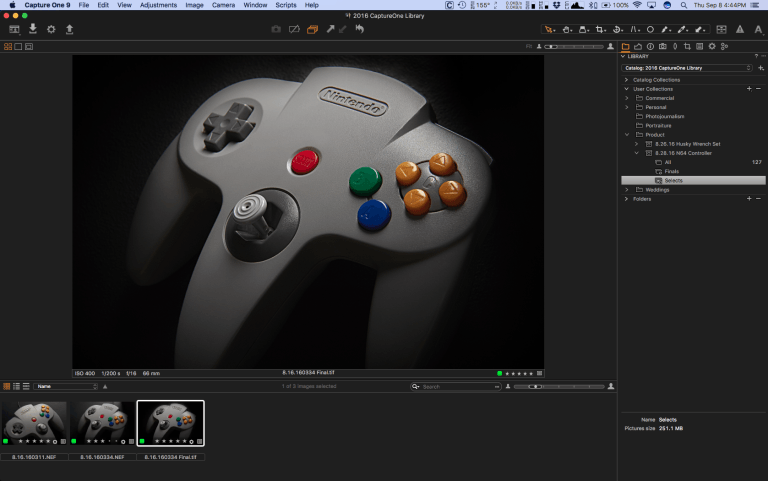
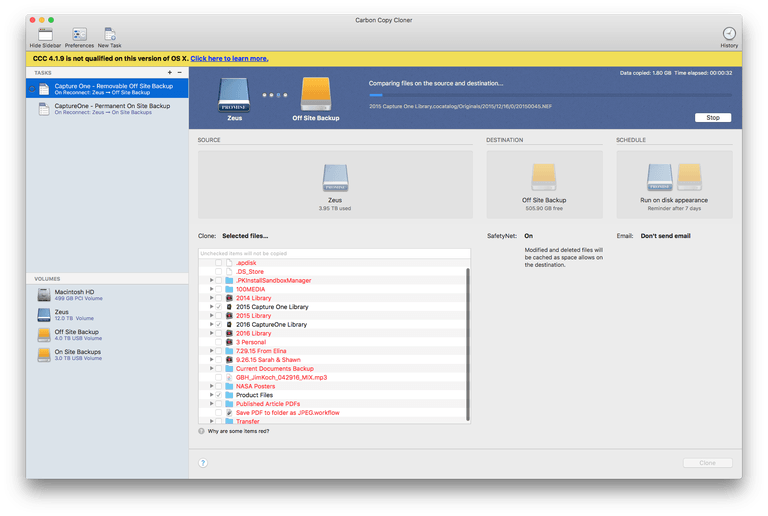

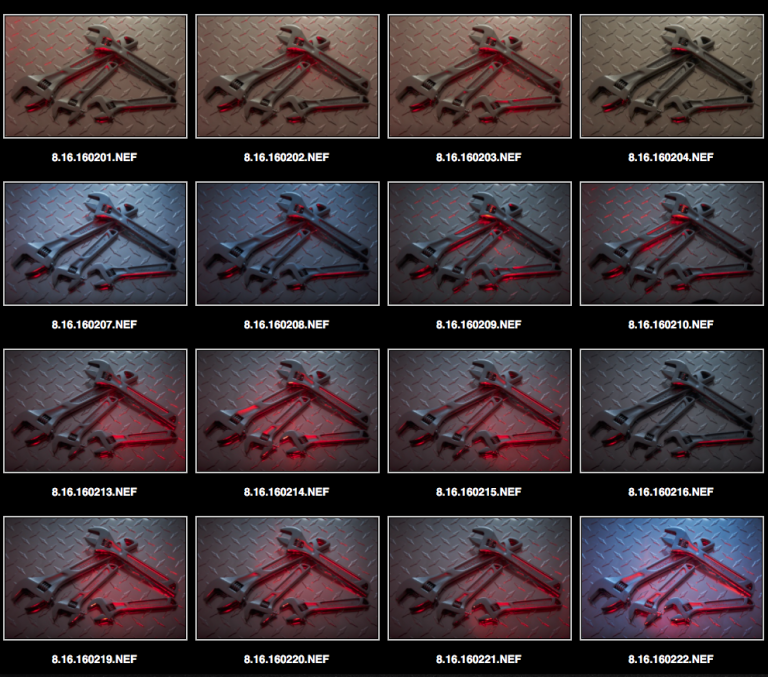
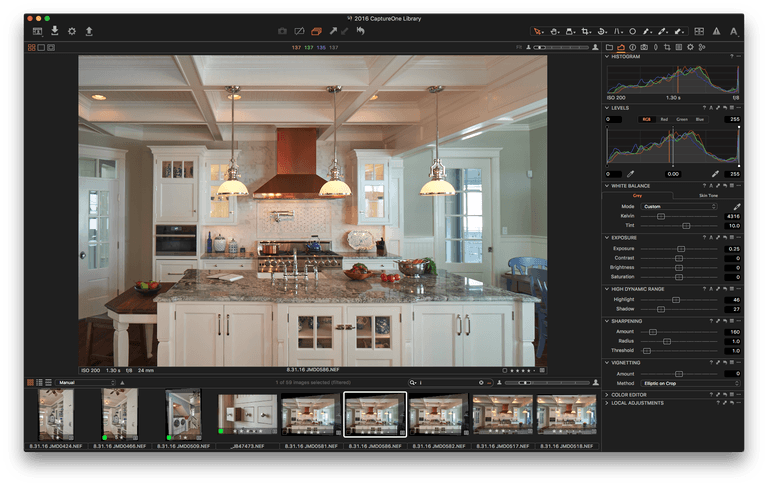
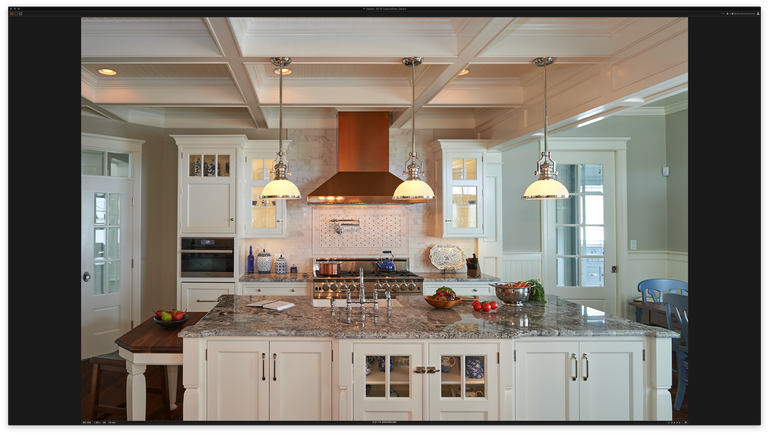

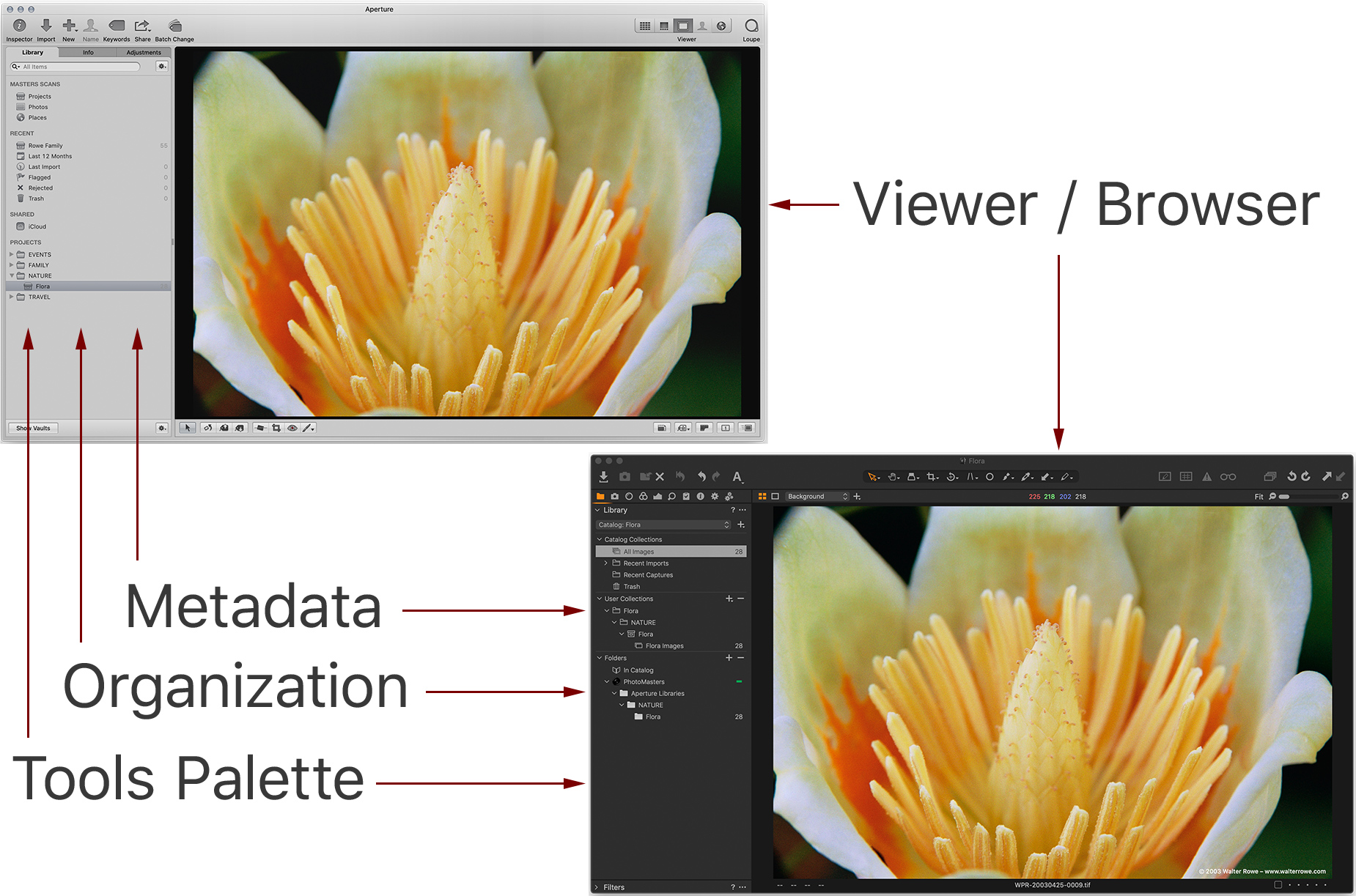

Hey Jordan,
Good to see you in person in NY!
To your questions…
1) I haven’t tried that workflow myself. The sort order is stored in the catalog DB, so when you imported your sub catalog, that order I am guessing was overidden. You could rename the images before you reimported them? Then they will be in order.
2) Make sure you are on 9.3. That was our only official Sierra release and not the Golden Master. They did actually end up with a Golden Master 2!
3) Easy! In the Output Naming Tool, click on the ‘…’ on the top right of the tool. Pick Set Output Counter.
David
Hey David, thanks for your kind words and superb info as always! It was great meeting you in person at Photo Plus Expo, a major highlights of the event for sure!
Agreed – I am using the very stable Capture One 9.3 and installed macOS 10.12.1 to get out of beta. Previews in Capture One are set to 2560 px and I’m working in just one C1 window which ended the crashes (esp. using three displays). Previews generate and load on the slow side, USB 3 ingestion speed is around 30 mb/s via an XQD 2.0 card to a Thunderbolt RAID in a managed library, so I’m pretty sure my MBP i5 hardware is the overarching hang up.
Thanks again David!
You’re welcome Jordan!
Are you running 3 displays from the one MBP? Thats definitely gonna impact performance! Do you know the GPU you have?
Also are you reading the Catalog from the RAID? It will certainly be faster if on the internal drive.
D
Hi! Your short list, is my short list 🙂 I was working in Aperture many years ( from 1.1 to 3.2 ) and after one year experience with Capture One, I had to say: Capture processing is as good, as interface is terrible 🙂
wonderfull
I agree. Heal and clone need help. Sometimes I have no idea where the source point is. Is it following my brush, guessing where I want the source?
Also.. how about a blur and or skin soften tool?
Thanks
Duh. Do not import duplicates should be a no brained. I often don’t erase a card before using so it can get messy if I don’t remember to un click the ones I don’t want imported again.
I’m not sure the “Don’t import duplicates” no-brainer is as much of a no-brainer as people think. – but that’s an open debate.
Meantime one could consider using a filter on import – date for example must be a good candidate.
As for the Arrows on the end of tool sliders . – how about dropping the cursor into the numeric value field and keying up or down from there? You will often find that there is a fine adjustment set by default but using the Shift key (Windows, not sure abut Mac) will up that by a factor of 10 for larger changes.
There are probably some other tips I have missed – I’ll leave it to David to pick them out.
I meant to include that, for the “arrows” point , place the cursor over the slider and “scroll” up or down will also provide adjustments.
You can also shortcut all of the Adjustments. i.e Specific shortcut for Plus/Minus Exposure.
Thanks for the info about imports and how not to duplicate. I’ll give that a try. As far as the “arrows” and “numeric” cursor, I’m not understanding. I am hoping for more of an Aperture experience whereby the selected point moves and follows the cursor when cloning or healing is being applied to a new area. Hard to explain if you are not familiar with Aperture.
Grant – great tip! I just discovered scrolling adjustment control this morning (albeit accidentally). Simply hovering over anywhere over the adjustment slider and scrolling up/down with two fingers on a trackpad. That’s the smoothest adjustment change I’ve ever encountered at my own desk. I replaced a Magic Trackpad with a Wacom Intuos Pro a few days ago and the Capture One workflow just keeps getting better! Currently the pen buttons are set to zoom an image to fit and also to 100% pixel view in Capture One 9.3, also increasing workflow speed.
Having just switched from Aperture to COP 9 not importing duplicates saves countless hours. i take about 30k photos a year for work and sometimes you miss a download of one of the jobs to the main storage. In Aperture you could just stick the SD card in with your job library open and the software would compare what you did not already have downloaded and show only the images you needed to import. This simple process save from duplicating files and taking hard drive space with those duplicates.
In response to the “no brainer reply” I wish it was easy, but sometimes with multiple jobs during the day and busy schedule what you thought was downloaded was not. I have caught missing photos before with this simple software comparison.
If the “PhaseOne” is listening please add this feature.
Do not import duplicates is something people have been asking for; for what seems like forever. I’m not sure why Phase One are having such difficulty providing it. The catalog database already has all the raw filenames so it should be easy enough to compare them against those to be imported. I have looked at CP1 8, 9 & now 10 in the hope that it would be a viable replacement for Aperture but I just can’t deal with the mess of re-importing images that happens if I forget to delete or for some reason the deletion doesn’t work. So for now I keep ending back with Aperture. I’m not particularly interested in Lightoom so perhaps net year with release 11 will be the time I get to switch?
Super useful info Jordan. My challenge with moving things over from Aperture to Capture One is that I can’t figure out how to move the master files. Importing the Aperture library doesn’t mean the files get physically moved. They remain inside the Aperture library ‘package’, and are just referenced in Capture One. Is there any way I can get these files completely moved to Capture One so everything is one location (and I can safely delete the Aperture files)?
I just started with Capture One Pro a few hours ago so I’m not totally sure what workspaces is but, regarding you “Shortcut to toggle between two workspaces quickly. However, one can add a drop down to the toolbar.” I think maybe you can just use Mac OS’s Spaces. System Prefs -> Trackpad -> More Gestures -> check Swipe up for Mission Control and also Swipe between full-screen apps. When you then swipe up and see all the mini versions of your windows, move the mouse up to the top right of the screen, click the + sign to add one or new Spaces. Hit Esc or choose some mini window to get out of that, then pin Capture One Pro to the Dock, then swipe with four fingers into your new Space, then go to the Dock, right-click Capture One -> Options -> Assign to ….then choose your new space. If you then for example open two catalogs or sessions you can put their windows in separate Spaces and 4-finger swipe back and forth between them. I just experimented with that myself and it works nicely.
It would be great if this blog was updated to reflect the true end-of-life of Aperture come macOS Catalina. Perhaps give it a refresh using the latest Capture One Pro (v12 is what I purchased earlier this summer). Thanks.